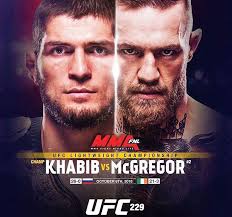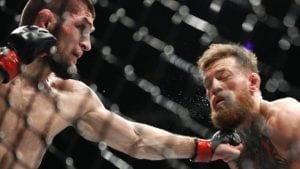Picture this: One minute you’re on your way home from work, dozing off on the train. The next minute, you’re startled by the shouting of police officers yelling commands. Guns are being pointed in every direction, and every person on the train is a potential target. The passengers’ faces flicker with worry, the way the subway stops flicker when signifying a destination. Within minutes, the tranquil train is overcome with anxiety and dread.
This very incident unfolded on the Lexington 4 train, as passengers witnessed a young boy being held at gunpoint. When police officers rushed onto the train brandishing weapons, passengers feared for their lives and quickly got out of their seats to huddle together. All except one. In the middle of this chaos, a young boy remained seated with his shaky hands held up over his head.
His name is Adrian Napier, a 19-year-old boy who was caught jumping a turnstile. When a group of officers approached him, Napier fled onto an incoming train. (Shepherd 2019). Unbeknownst to him, NYPD backup was called, and eventually 10-15 officers swarmed the train with guns pointing towards Napier and the other passengers. They tackled Napier and pushed him onto the ground, despite him being completely unarmed and compliant.
In case you’re wondering how an arrest in NYC goes down. The guy has made absolutely no indication that he would flee or fight and wasn’t trying to hide.
If you can’t see, the reason everyone moved was because all the police had taken out their guns and aimed at him. pic.twitter.com/dAstrtMntz
— Elad Nehorai (@PopChassid) October 25, 2019
So, what happened? How did this small crime transform into something so deadly so quickly?
Deindividuation occurs in groups that foster responsiveness to group norms, whether good or bad. Police officers primarily share one goal: to enforce the law. However, when people are in bigger group settings, they tend to disregard personal views — such as the way to treat suspects — in order to focus on the goal at hand. When a large group of people work together as a singular unit, they might lose themselves, or lose a piece of who they are.
According to Meyers (2018), “It is harder to imagine a single rock fan screaming deliriously at a private rock concert, or a single police officer beating a defenseless offender or suspect.” The same can be applied to police brutality: police officers may respond to their teammates’ abuse of authority by mirroring the same actions. This can lead to scary — and sometimes, life threatening — situations. They may disregard common protocol when they are in high stress situations Deindividuation and groupthink typically go hand in hand. Groupthink is the practice by which group members disregard thinking for themselves, and are more concerned with group agreement. This tends to arise in situations that encourage conformity and high cohesiveness.In law enforcement, there is little to no time to think about the decisions you make before you make them. This can lead officers to hide personal concerns in order to maintain harmony and order.
When we make the decision to join groups — whether its becoming a student at a university, joining a club, or becoming an employee — we lose a piece of our identity. You are not just “you” anymore; you are another employee, another police officer, and this can take away from who you really are. In law enforcement, this can create a diffusion of responsibility, making officers not feel as guilty if they mistreat a suspect or criminal. Similarly, the actions within a police unit can influence the police officers and make them lose their sense of selves. This can result in officers who simply go along with following orders, even if those orders are not exactly moral, in order to enforce the law. The police officers were so engrossed in taking down this “criminal” that they forgot who he truly was: a teenage boy who couldn’t pay the $2.75 fare.
I am in no way trying to defend Napier; I definitely believe that his actions warrant some form of consequence. At the same time, however, I believe that the police officers blew the situation entirely out of proportion. By becoming engrossed in enforcing the law, the police officers put many people’s lives in danger and struck fear into the hearts of people that they were trying so desperately to protect.
Myers, D. G., Twenge, J.M. (2018). Exploring Social Psychology (Eighth Ed.). New York: McGraw-Hill.
Nehorai, E. (2019, October 25). In case you’re wondering how an arrest in NYC goes down. pic.twitter.com/dAstrtMntz. Retrieved from https://twitter.com/PopChassid/status/1187838293104304130?ref_src=twsrc^tfw|twcamp^tweetembed|twterm^1188139071316615169&ref_url=https://twitter.com/YoliZama/status/1188139071316615169.
Shepherd, K. (2019, October 29). Police filmed tackling and pointing guns at teenager who dodged £2 train fare. Retrieved from https://www.independent.co.uk/news/world/americas/new-york-police-subway-fare-dodging-guns-video-brooklyn-a9175556.html.
Azell Rodriguez




